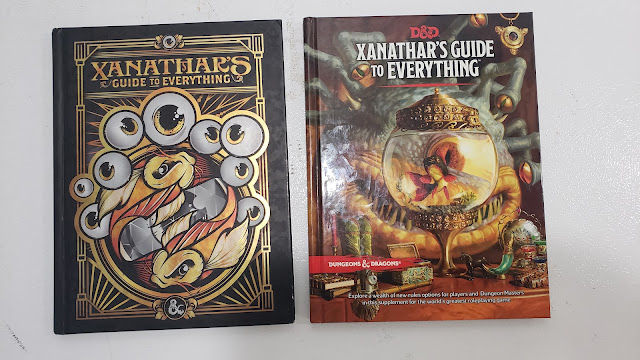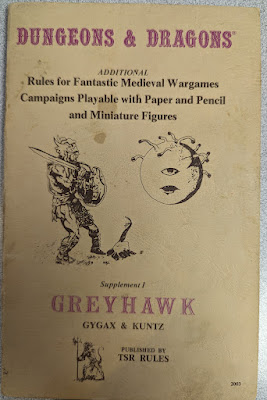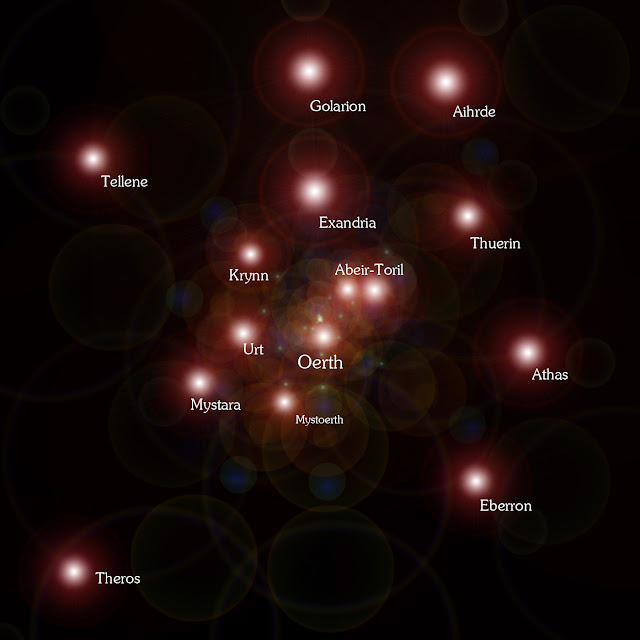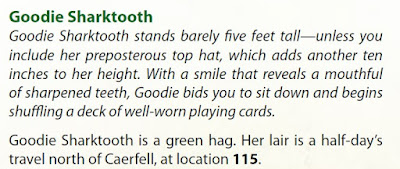Last month, I made the claim that D&D 5.5/2024 Edition should have its own campaign world. This generated some very lively discussions. However, more than a few people were confused as to the purpose of that post.
Yes. You can make your own game world. Everyone can. Everyone does.
But that post wasn't about that.
It was about Wizards of the Coast making a new world. A product for sale and a marketing tool. Something to help emphasize and feature the new rules and vision of the D&D 2024 game. A flagship setting that tells the players, “This is what this edition is for.”
So, to be up front, here are the objectives of this post:
To identify what makes the 2024 Edition of D&D 5e different, and what a campaign world should do to support these new rules and views.
So, what should a world for D&D 5.5/2024 look like?
A world that welcomes heroes of every species, that speaks the same bold language as the rules and art? It shouldn't just retrofit old kingdoms, it should feel like the start of a new mythology. Not a museum for nostalgia, but a canvas for discovery.
What is the Point of View of the New Game?
The new D&D game is not the same Sword & Sorcery game rooted in the pulp epics of R.E. Howard, the epic fantasy of Tolkien, or the weird horror of Lovecraft. Sure, those roots are still there, but they’ve become fertilizer for something new. D&D fantasy is now its own genre, just as recognizable and distinct as High Fantasy or Grimdark.
D&D 2024 is Heroic Fantasy, Reforged.
The rules assume you are powerful, competent, and connected to a world that matters. This isn’t about crawling through dungeons looking for 14 copper pieces and a rusty dagger. This is a game where characters shape the world, not just loot it.
And the world they shape should reflect that.
This quote from early in the Player's Handbook (p. 4) sets the tone.
“There’s no winning and losing in D&D, at least not the way those terms are usually understood. Together you and friends create an exciting story of adventurers who confront perils. Sometimes an adventurer might come to a tragic end. Even so, the other adventurers can search for powerful magic to revive their fallen comrade, or the character’s player might create a new character to carry on. No matter what happens, if everyone has a good time and creates a memorable story, they all win.”
This new world is not the Realms. It is not Greyhawk. It is not born of Dragonlance’s epic saga or Eberron’s intrigue. Modules or boxed sets from the 1980s don't hold this world together. It doesn't need to be. It can stand on its own, because the new edition does. This new world draws on all of those, but it is, or should be, its own new thing.
D&D 2024 is no longer just inspired by existing fantasy genres; it has become its own unique blend: a fusion of classic fantasy, modern storytelling, video game logic, and collaborative heroism. Most of the players of this game have never read any of the books in Appendix N, nor do they need to. It's not required reading, it's not homework.
The 2024 Rules Philosophy: Why This Edition Feels Different
The 2024 edition does not simply revise the math or tidy up the rulebooks. It reflects a new philosophy that reshapes how players engage with the game world:
- Heroic from Level 1: Characters are competent, capable, and connected from the start. They are agents of change, not fragile wanderers.
- Background Defines Destiny: Backgrounds carry some mechanical weight, adjusting ability scores, granting a starting feat, and shaping a character’s narrative role.
- Species, Not Race: The old assumptions are gone. Every ancestry is valid, integrated, and part of the world’s core mythology from the beginning.
- Epic Play Is Expected: Epic Boons and expanded high-level content create long arcs where characters leave permanent marks on the world. Bastions given them a place to grow.
- Rest and Recovery Shift: Revised rest rules and healing mechanics de-emphasize attrition gameplay and resource management in favor of narrative pacing.
- Inspiration & Heroic Dice: The system encourages cinematic moments, rewarding bold choices and emotional storytelling.
- Moral Complexity Over Alignment: The world emphasizes choices, consequences, and motivations rather than rigid alignment tags.
- Collaborative Worldbuilding: Bastions, crafting, and political influence give players tangible ways to build and shape the world around them.
This isn’t just new mechanics; it’s a new gameplay rhythm. The world that supports this edition must reflect these values: vibrant, inclusive, and full of heroic possibility.
A Place for Everyone
Last time, I mentioned that human-centric is no longer the norm. Tieflings, kenku, rabbitfolk, genasi, and goliaths are not "weird options," they are the foundation. We’re not explaining their presence as magical accidents. They are the world’s people. Full stop.
And that means designing a world where they belong from the start.
This is not just a question of species, but of society. The world needs to be built from the ground up as a multicultural setting. Not a monoculture with elves here and dwarves over there, but a place where cities are melting pots, just like our own. Diverse, imperfect, growing, and alive.
The landscape must reflect this (we are not drifting too far afield here):
- Forests for Elves, Firbolgs, and Gnomes.
- Mountains for Dwarves, Goliaths, and Dragonborn.
- Elemental zones, volcanoes, storm-swept coastlines, and crystal deserts for Genasi (and maybe Dragonborn too).
- Planar-infused regions where Githyanki, Tieflings, and Aasimar emerged from divine or infernal events not exiled, not feared, but part of the world’s mythic history.
- Underground realms and deep caverns, not evil hives, but mysterious cultures for Svirfneblin, Kobolds, even Goblinoid societies.
You don't explain these people as oddities or invaders. You explain them as native to this world’s story.
And yes, it must use 'species,' not 'race.' Background and culture shape identity as much or more than biology. This is a world that embraces the idea that what you choose matters.
By everyone, I don't just mean "Characters" but "Players" as well. A new world would not just serve veteran players looking for a fresh canvas; it would provide an accessible, self-contained starting point for brand-new players who are being drawn into D&D through its growing cultural presence.
A Place for Bastions, Magical Shops, and More
Blame Skyrim, Minecraft, Animal Crossing, or Critical Role, modern players want to build. The 2024 edition's rules for Bastions are a direct response to this.
So the world must support that mechanic. Not just as a gimmick, but as a narrative engine.
- Frontier zones and wild lands for players to reclaim and shape.
- Urban districts where old guildhalls, mage towers, or abandoned temples can be refurbished into faction bases.
- Political factions that reward player heroes with lands, titles, or responsibilities.
- Magical areas, ripe for discovery and filled with mystery and potential.
A Bastion isn’t just a stronghold; it’s a symbol of the character’s impact on the world. A forge, a sanctuary, a school, a demiplane, it should reflect the kind of hero, and the player, who built it.
And magic items? They’re not just loot anymore, they’re craft. The world should have rare components, legendary artificers, and magical economies that support the idea that players make as much as they take. Characters no longer search for a magical weapon, they search for the items, rare and wonderful, to craft this magical weapon.
A Place for Heroes, Not Murder Hobos
This is maybe the most important shift of all.
D&D 2024 assumes that the characters will be heroes from the start. The world should provide the challenges to allow them to do that.
In that vein, while the emphasis on alignment is lessened, the heroic deeds of the characters, informed by their backgrounds and motivations, is pushed to the front.
That means the world must reinforce heroism:
- Villains have goals, not alignment tags. They make choices that harm others, threaten communities, or disrupt the world’s spiritual balance, and heroes rise to challenge them.
- NPCs matter, not just as quest-givers or obstacles, but as people whose lives improve (or suffer) depending on what the heroes do.
- Monsters have new and updated lore. A new world needs to feature the unique abilities, behaviors, and updated lore of the 2024 monsters as integral parts of its ecosystems and mythos. Old "evil" species have new motivations, and old "heroic" creatures have new purposes. All of these have to have a place in the world
- Factions reward good deeds not only with gold and magic but with respect, stories, and influence.
When characters act heroically, the world should respond. They gain allies. They inspire others. They become part of the land’s living mythology.
This is a world that expects heroes to rise, and needs them to.
Don't get me wrong here, I have seen D&D 5e characters do things that can be classified as war crimes, but characters are always going to that. This is about the world that the new rules tries to build and how the PCs can build within it.
A Place Worth Saving
Lastly, the world itself must be beautiful.
Not just dangerous or mysterious, it is those, but also wondrous. Filled with things worth protecting.
- Floating islands with gardens tended by treants and air genasi.
- A continent slowly awakening after a divine slumber, its forests singing with echoes of lost gods.
- Cities built in the bones of giant beasts, their spires crafted from dragonbone and crystal.
- A golden river that flows backward, carrying visions of future destinies.
- Hidden portals, ancient mysteries, new lands still becoming.
- A world that has a unique, even special, place in the D&D Multiverse.
Because players want to care. And caring starts with wonder.
Honorable Mentions
I would be remiss if I did not mention some campaign worlds that can do all of this in one form or another.
Eberron did for 3e what this new world should do for 5e. Can it do all of this now? I don't know Eberron is the world I am the least knowledgeable about.
The Forgotten Realms can also do this. And in many significant ways, it does do this. The Forgotten Realms of the Baldur's Gate 3 game does at least and still balances what the old-school gamers like. Take the questline in Act 1 for example. You need to wipe out a camp of goblins. Mind you, you are not doing this just because they are Goblins. You are doing it because they are worshippers of the evil Cult of the Absolute, bent on tyrannical conquest. If you take them out, then a group of tieflings can get to safety (in theory). The different species and factions don't have to get along in this new world.
We will be getting an updated Forgotten Realms campaign setting later this year.
Points of Light of Nentir Vale tried to do this with D&D 4e, but that had many issues of its own to deal with. That world had a mish-mash of all the previous worlds before it in a grand experiment of sorts, but it never took off as well as I think WotC wanted it to do.
Mystara does this well. Like the Forgotten Realms, nearly every hex on this world (and in it!) has been explored or at least discussed. But my refrain for the last 30 years has been "Mystara can do that" anytime someone asks if a world can do X, Y, or Z. Mystara can do all of the above. Though there are no Gods in Mystara. This may or may not be an issue for some. Certainly, D&D 5.5 can support this, but players like their characters to have gods.
Exandria is the world from the Critical Role actual plays and supported by four rule books. This world does in fact do all the above and has a place for all sorts of humanoids in the world. It even has some gods from all over the D&D multiverse, including a few from Pathfinder. It was more or less custom-made for D&D 5 (2014 edition) by Matt Mercer. It is even mentioned in the new 2024 DMG. Its biggest drawback is that it is very much Mercer's world. Unless something changes, we are not likely to see any more Exandria for D&D 5. Mercer and crew have their new Daggerheart game out now, and they are going to want to support that.
I like Exandria. I love Mystara, and I have grown to love the Realms. But maybe we do need something new.
Why a New World Matters
A brand-new setting would do more than showcase the rules. It would define the cultural and creative identity of this edition, just as Greyhawk, Dragonlance, the Realms, or Eberron defined their eras. For new players entering through the 2024 gateway, it becomes their first mythology, one unburdened by decades of inherited continuity.
A world that says: This is what D&D means now.



















